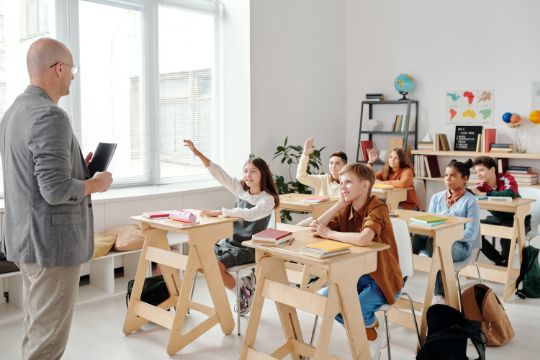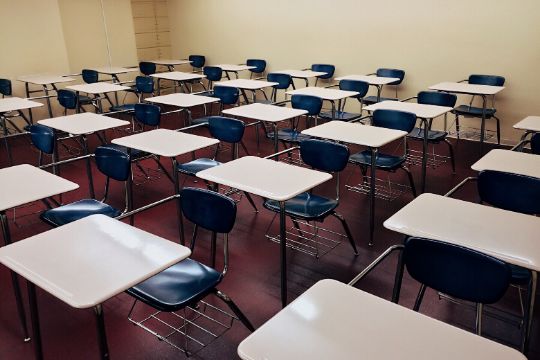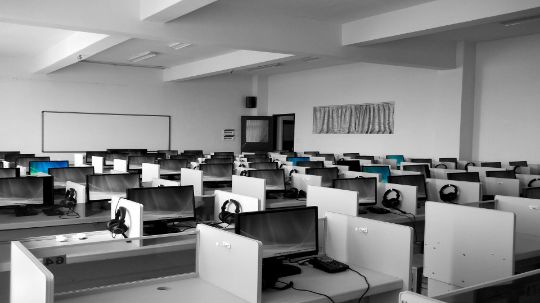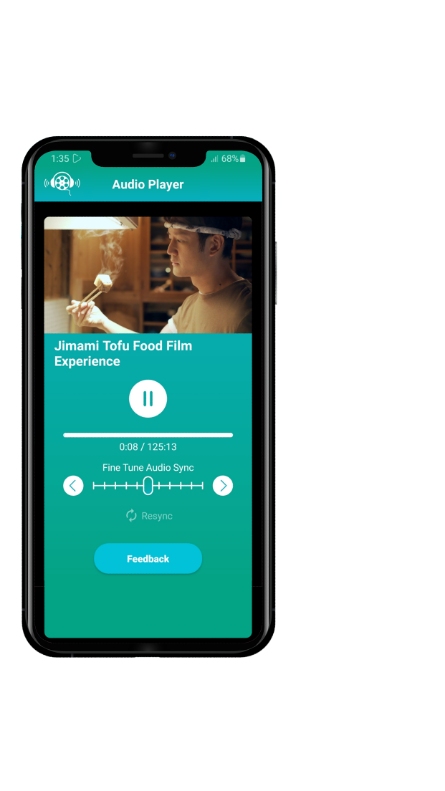Cinewav in Education
The Problem
- Education still primarily consists of a teacher delivering instructional content to students. Whether it's done through a blackboard, whiteboard or digitally it is audio-visual delivery of content.
- Audio is generally poorer than visuals (and probably represents more than 50% of the content)
- Background noise in most classrooms is much higher than recommended by WHO
- Signal (teacher's voice) to noise (background noise) ratio is far below recommendations
- Signal (teacher's voice) drops off significantly the further away students sit or as teachers move through the classroom
- Large class sizes contribute to the noise and signal issue
- Studies show significant detrimental impact on learning due to poor signal to noise ratio and background noise
- Improving signal to noise ratio can be expensive and cumbersome (new architecture, acoustic treatment, amplifiers, FM transmitters)
The Solution
- eliminating background noise
- raising signal to noise ratio to optimum levels for every student (regardless of where they are seated)
- eliminating distraction from surrounding student chatter
- allowing students the focussed space for individual concentration and flow
- keeping all students in sync with the visuals and each other - social constructivism is preserved
- allowing the teacher to start, stop or skip through the AV presentation keeping everyone in sync
- allowing the class to be split so that half can experience content through Cinewav while the other half can do group work (improving teacher to student ratios)
- using hardware that students and teachers already have (teacher laptop and student smartphones)
added benefits
- Digitising of classroom content allows scalability of delivery - teachers can share content through the school or between schools (perfect for specialised teaching like foreign languages)
- Multi-track feature on Cinewav allows different audio tracks to be played in sync with the visuals. This could be used for delivery of classes in different languages simultaneously OR different levels of instruction.
- Preservation of teachers' voices and energy allows greater individual or small group attention from teachers.
Concluson
"The reviewed studies document harmful effects of noise on children's learning. Children are much more impaired than adults by noise in tasks involving speech perception and listening comprehension. Non-auditory tasks such as short-term memory, reading and writing are also impaired by noise. Depending on the nature of the tasks and sounds, these impairments may result from specific interference with perceptual and cognitive processes involved in the focal task, and/or from a more general attention capture process."

An investigation into how the acoustics of different sized open plan classrooms affect speech perception in Kindergarten children
"The noise levels recorded during the task were higher in the larger open plan classrooms compared to the smaller classrooms for both the quiet and noisy conditions. A linear mixed effects model revealed that children’s performance accuracy decreased as noise level increased. Additionally, children’s speech perception abilities decreased the further away they were seated from the loudspeaker, and this effect was stronger the higher the noise level. Children’s response time was also slower in the noisiest compared to quietest classroom."

Acoustical Quality, Student Learning, and Teacher Health
"In addition to degrading children’s ability to recognize speech sounds, excessive noise can also interfere with the performance of various tasks. For example, children have been found to be more likely to give up on solving difficult puzzles in noisier situations (Cohen et al., 1980). Interfering noise can be more distracting for younger children (Higgins and Turnure, 1984), and speech sounds can be more disturbing than neutral, ventilation-type noises (Carhart et al., 1969; Elliott et al., 1979). This latter result suggests that speech sounds from adjacent classrooms are much more distracting than many other types of noise. The interference with the recognition of speech sounds and with various tasks may explain, in part, reported impaired student achievement in noisy environments."

Effects to teaching environment of noise level in school classrooms

Effects of noise and reverberation on speech perception and listening comprehension of children and adults in a classroom-like setting
"This indicates that background speech affects higher-order cognitive processes involved in children΄s comprehension. Children΄s ratings of the sound-induced disturbance were low overall and uncorrelated to the actual disruption, indicating that the children did not consciously realize the detrimental effects. The present results confirm earlier findings on the substantial impact of noise and reverberation on children's speech perception, and extend these to classroom-like environmental settings and listening demands closely resembling those faced by children at school."

Effects of irrelevant speech and traffic noise on speech perception and cognitive performance in elementary school children
"In line with adult studies on "irrelevant sound effect" (ISE), serial recall of visually presented digits was severely disrupted by background speech that the children did not understand. Train noises of equal Intensity however, had no effect. Similar results were demonstrated with tasks requiring storage and processing of heard information. Memory for nonwords, execution of oral instructions and categorizing speech sounds were significantly disrupted by irrelevant speech. The affected functions play a fundamental role in the acquisition of spoken and written language. Implications concerning current models of the ISE and the acoustic conditions in schools and kindergardens are discussed."

Interference by process, not content, determines semantic auditory distraction

Experimental investigation of the effects of the acoustical conditions in a simulated classroom on speech recognition and learning in children
"Significant differences were seen in comprehension scores as a function of age and condition; both increasing background noise and reverberation degraded performance in comprehension tasks compared to minimal differences in measures of sentence-recognition."

Speech Perception Benefits of FM and Infrared Devices to Children With Hearing Aids in a Typical Classroom
"Desktop and personal FM systems in combination with personal hearing aids provided substantial improvements in speech recognition."

The Effect of Classroom Amplification on the Signal-to-Noise Ratio in Classrooms While Class Is in Session
"The results revealed that when classroom amplification was used, students heard the teacher’s voice at a level that was an average of 13 dB above the noise floor as compared to an average of +2 dB above the noise floor without amplification."

How it works - for students
download the Cinewav app
On Google Play and Apple Store
download the lesson
Teachers can share private, direct links to their lessons
Play
When the teacher plays the visuals in the classroom students simply press play on their own phones
Minimal data
Uses minimal data, approx 2MB (equivalent of 1 email) over 2 hours

